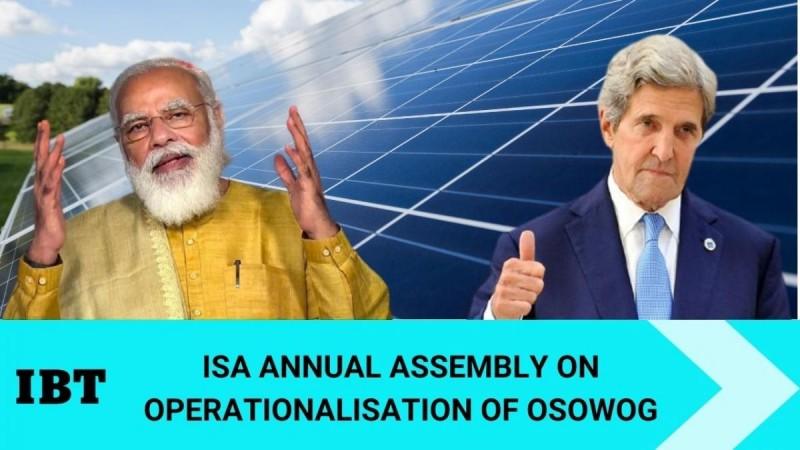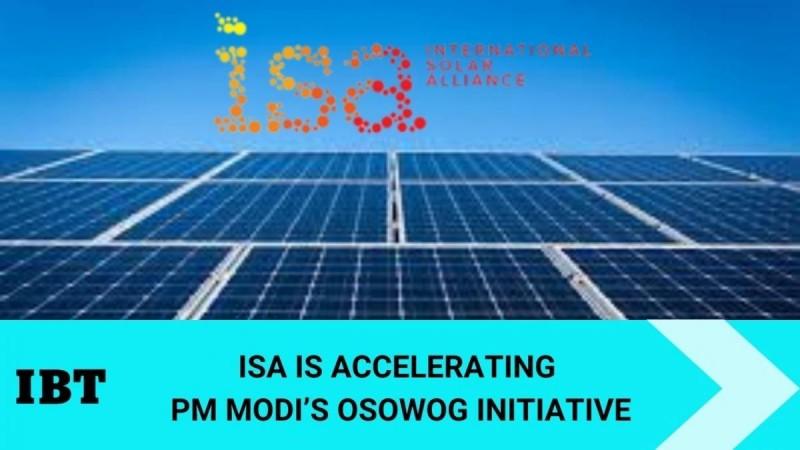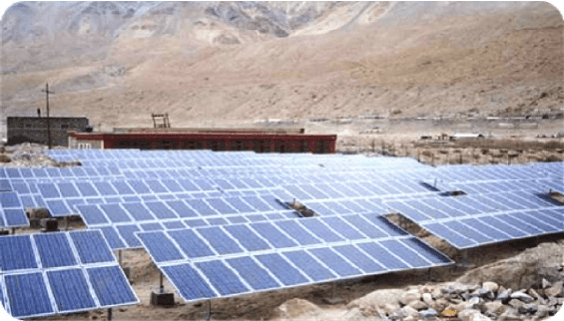In 2018, Indian Prime Minister Narendra Modi suggested an idea for an interconnected global solar power grid and the world's first transnational solar panel network is set to launch as early as next year. India and the UK are spearheading the One Sun, One World, One Grid (OSOWOG) initiative, which aims connect 140 countries with solar power round-the-clock. The blueprints for the OSOWOG initiative will be unveiled at the COP26 climate conference in Glasgow, which kicks off on October 31 and runs through November 12. World leaders, including PM Modi and UK PM Boris Johnson among others, will be attending the World Leader's Summit of the 26th Conference of Parties (COP-26).
The concept of a single global grid for solar was first outlined at the First Assembly of the ISA in late 2018 by PM Modi. It envisions building and scaling inter-regional energy grids to share solar energy across the globe, leveraging the differences of time zones, seasons, resources, and prices between countries and regions. OSOWOG will also help decarbonise energy production, which is today the largest source of global greenhouse gas emissions. With OSOWOG, India is planning to take a leadership position.

With India's Ministry of New and Renewable Energy, the World Bank and the ISA signing a tripartite agreement on OSOWOG, the initiative could be the world's most important renewables catalyst. To further that aim, ISA has committed to providing technical and financial support to developing countries to help them undertake Demonstration Solar projects.
ISA commits $50K for solar infra
The ISA has announced that it will provide a grant of up to $50,000 to Least Developed Countries (LDC) and Small Island Developing States (SID) member countries in a bid to help them undertake Demonstration Solar projects. Dr. Ajay Mathur, Director General, International Solar Alliance, has approved Detailed Project Reports (DPRs) of 11 ISA member countries including Comoros, Ethiopia, Fiji, Guyana, Jamaica, Kiribati, Malawi, Senegal, Togo, Tonga, and Niger.
Seven Member Countries, including Burundi, Comoros, Djibouti, Ethiopia, Fiji, Senegal, and Sudan, have opted for demonstration project implementation by the ISA. These projects will be implemented through NTPC, which is ISA's Project Management Consultancy. In addition, 13 Member Countries, including Benin, Cambodia, Cuba, Guyana, Jamaica, Kiribati, Mali, Mozambique, Niger, Suriname, Tonga, Togo and Uganda, have opted for direct implementation while the other seven Member Countries are yet to decide the implementation modality. However, DPRs for 18 out of 27 countries are being prepared by NTPC.

Key objectives of solar projects
ISA has listed down four main objectives of Demonstration Solar Projects, for which a generous grant has been approved. Besides providing necessary support to LDC and SID member countries to implement demonstration projects, the ISA aims to support resilience building in key sectors such as agriculture and health in the backdrop of the Covid crisis. ISA also wants to create markets for innovative solar technologies and to increase their access in LDCs and SIDS Member Countries, and foster innovation in business model, finance, technology and implementation modalities.
"The ISA is continuously looking at ways and means to support the socio-economic goals of our member countries. These grants reflect our commitment to their accelerated solarization. The projects supported through these grants will also help identify the modifications in national policies and processes that will enable fast replication," Dr Mathur said in a statement.

Dr Mathur, in a recent interview with the Telegraph, said that the OSOWOG aims to reduce nations' reliance on non-renewable energy sources such as coal by enabling them to purchase solar power from other countries with excess at affordable rates.
"Energy can flow from nations where the sun is shining to where the sun has already set. It allows everyone to use more green energy that they would use otherwise," said Dr Mathur, adding that "What we want to do next is to enable countries to link up with each other and we would help them in terms of technology. When it is dark in east Africa it might be light in India, and vice versa."
Also, the ISA is aiming to secure $1 trillion of funding by 2030 to assist developing countries like India to expand their solar infrastructure.















